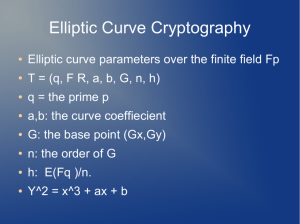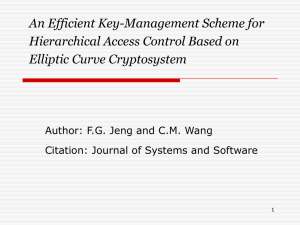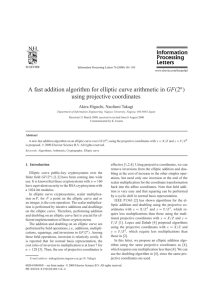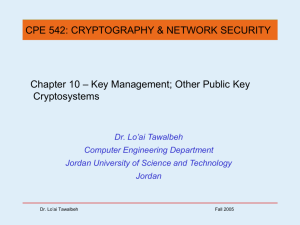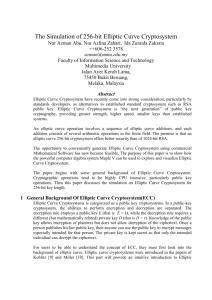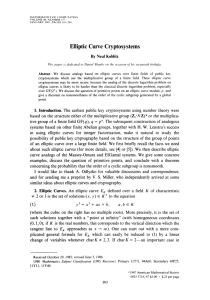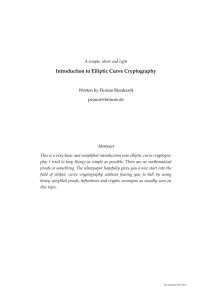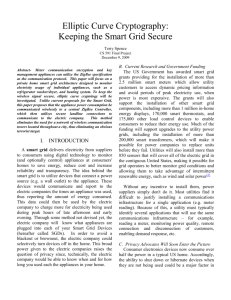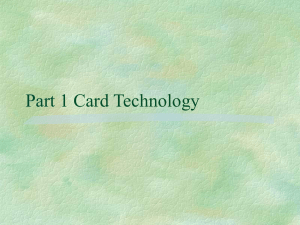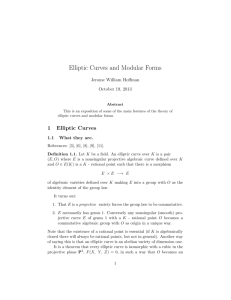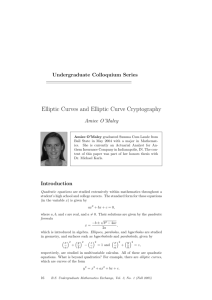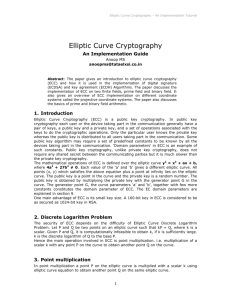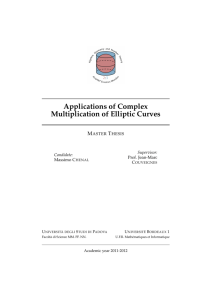Elliptic Curve Cryptography
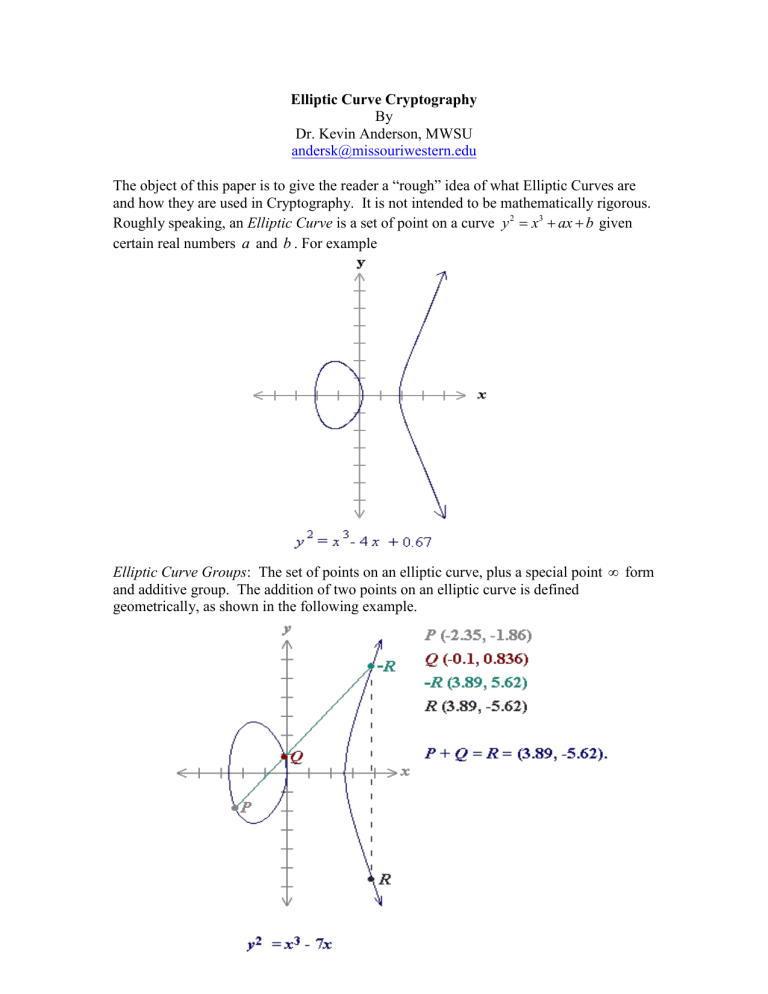
Elliptic Curve Cryptography
By
Dr. Kevin Anderson, MWSU andersk@missouriwestern.edu
The object of this paper is to give the reader a “rough” idea of what Elliptic Curves are and how they are used in Cryptography. It is not intended to be mathematically rigorous.
Roughly speaking, an Elliptic Curve is a set of point on a curve y
2 x
3
given certain real numbers a and b . For example
Elliptic Curve Groups : The set of points on an elliptic curve, plus a special point
form and additive group. The addition of two points on an elliptic curve is defined geometrically, as shown in the following example.
Elliptic Curve Encryption Algorithms depend on the difficulty of calculating kP where k is a product of two large primes and P is an element in the Elliptic Curve Group.
Geometrically to add a point P to it self you first construct the tangent line to the curve at the point. Then the line will intersect the curve at only one point, and the addition of
2 P is then defined to be the negative of the point of intersection as seen below.
Elliptic curve groups over real numbers are not practical for cryptography due to slowness of calculations and round-off error. This Elliptic Curves Over Finite Fields are used. An elliptic curve over a finite field F p
of characteristic greater than three can be formed by choosing the variables a and b within the field F p
.
Roughly speaking the elliptic curve is then the set of points ( , ) which satisfy the elliptic curve equation y
2 x
3
modulo p , where ,
p
; together with a special point
. If x
3 ax
b
4 a
3
27 b
2
contains no repeated factors, or equivalently if
, then these points form a group.
It is well known that EGC (the Elliptic Curve Group) is an additive abelian group with
serving as its identity element.
Example : In the ECG of equation y
2 x
3 x
2
over the field F the point (9, 5) satisfies the
23 y
2 x
3 x
2
(mod 23) as 25
729 9(mod 23) . The elements of this ECG are given in the pictured below.
Obviously we no longer have a curve to define our addition geometrically. Emulating the geometric construction for addition, the formulas for addition over F p
(characteristic 3) are given as follows: Let P x y
1 1
) and Q x y
2 2
) be elements of the ECG. Then
( ,
3
) , where and
x
3 y
3
y x
( x
1
x
3
)
y
1
2
2
2
y x
1
1
3 x
1
2 a
2 y
1
if if x
2
P
P
Q
Q
These formulas can be easily calculated with computers. For field of characteristic 2 the equations for addition are worse!
At the heart of every cryptosystem is a hard mathematical problem that is computationally infeasible to solve. The Discrete Logarithm Problem is the basis for the security of many cryptosystem including the Elliptic Curve Cryptosystem.
Definition of the Discrete Logarithm Problem:
In the multiplication group F p
, the discrete logarithm problem that is: Given elements r and q in F p
, find a number k such that r
qk .
Similarly the Elliptic Curve Discrete Logarithm Problem is: Given points P and Q in an ECG over a finite field find an integer k such that Pk
Q . Here k is called the discrete log of Q to the base P.
This doesn’t seem like a difficult problem, but if you don’t know what k is calculating
Pk
Q takes roughly 2 k 2 operations. So if k is say, 160 bits long, then it would take about
80
2 operations!! To put this into perspective, if you could do a billion operations per second, this would take about 38 million years. This is a huge savings over the standard public key encryption system where 1024 and 3074 bit keys are recommended.
The smaller size of the keys for Elliptic Curve Encryption makes it idea for applications such as encrypting cell-phone calls, credit card transactions, and other applications where memory and speed are an issue. There are pros and cons to both ECC and RSA encryption. ECC is faster then RSA for signing and decryption, but slower than RSA for signature verification and encryption. Much of the material used in this paper can be found in the websites listed in the references.
Reference: http://www.garykessler.net/library/crypto.html#ecc http://www.certicom.com/index.php




